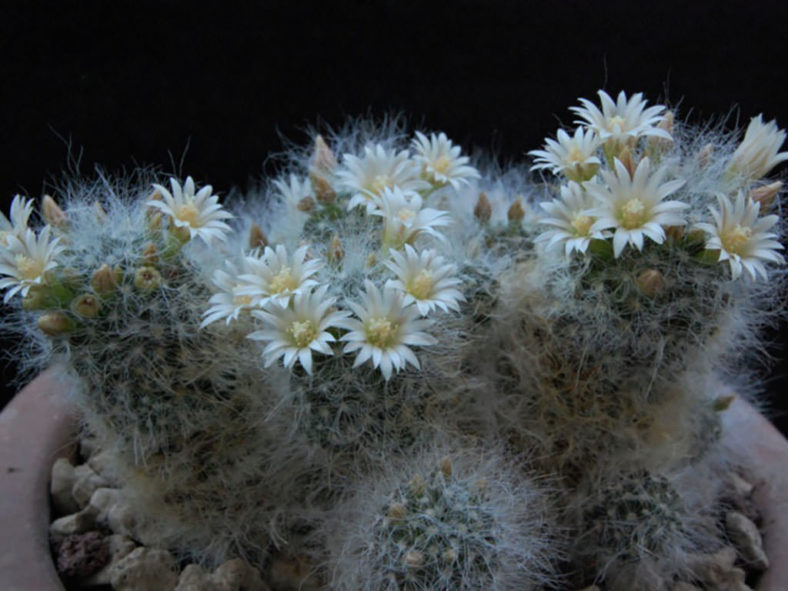Scientific Name
Mammillaria scheinvariana R.Ortega & C.E.Glass
Accepted Scientific Name
Synonym(s)
Mammillaria crinita subsp. scheinvariana
Scientific Classification
Family: Cactaceae
Subfamily: Cactoideae
Tribe: Cacteae
Subtribe: Cactinae
Genus: Mammillaria
Etymology
The specific epithet "scheinvariana (shin-var-ee-uh-AY-nuh)" honors Léia Akcelrad Lerner de Scheinvar (born 1954), a Brazilian-Mexican botanist who has dedicated her work to studying and protecting Mexico's cacti.
Origin
Mammillaria scheinvariana is native to Mexico (Queretaro). Unfortunately, all the known sites for the plant are submerged by the Zimapan Dam. Since other populations are not discovered, it is considered extinct in the wild. Some authors consider it to deserve recognition as a distinct species, but it is usually treated as a synonym or subspecies of Mammillaria crinita.
Description
Mammillaria scheinvariana, also known as Mammillaria crinita subsp. scheinvariana, is a small cactus that forms clumps of spherical to short cylindrical stems with numerous hairlike radial spines, giving it a woolly appearance. The stems can grow up to 1.4 inches (3.5 cm) tall and 2 inches (5 cm) in diameter. The central spines are not usually present. If so, they are never hooked and can reach up to 0.6 inches (1.5 cm) in length.
The flowers are funnel-shaped, white to salmon pink, and appear in spring, usually in a ring near the apex of the stem.

How to Grow and Care for Mammillaria scheinvariana
Light: Plant this cactus in an area of your garden that receives 4 hours of direct sunlight a day. If you are growing M. scheinvariana indoors, place it near the brightest window in your home or office to ensure your cactus gets enough light. Place the pot on the balcony or in the garden for extra light from spring to fall if possible.
Soil: M. scheinvariana requires a soil mix that provides root aeration and good drainage, whether grown outdoors or indoors. Use a commercial cactus potting mix, or create your own.
Temperature: This cactus is heat tolerant but not a cold-hardy plant. M. scheinvariana can withstand temperatures as low as 25 °F (-3.9 °C). USDA Plant Hardiness Zones 9b to 11b, 25 to 50 °F (-3.9 to 10 °C).
Watering: From spring to fall, water deeply and wait for the soil to dry before watering again. Never let the pot sit in water. Suspend watering in the winter.
Fertilizing: M. scheinvariana can benefit from fertilizing during the growing season. Apply a water-soluble fertilizer for cacti and other succulents. Suspend feeding during the winter when the plant goes dormant.
Repotting: Repot every two or three years into a slightly larger pot. The best time to repot your M. scheinvariana is late winter or early spring, but the repotting process can be done almost any time of the year.
Propagation: There are two easy ways to propagate M. scheinvariana: by seeds or by dividing offsets. The best time to remove offsets is in spring and summer. Sow the seeds in late spring or summer.
Learn more at How to Grow and Care for Mammillaria.
Toxicity of Mammillaria scheinvariana
M. scheinvariana is considered non-toxic to both humans and pets.
Links
- Back to genus Mammillaria
- Succupedia: Browse succulents by Scientific Name, Common Name, Genus, Family, USDA Hardiness Zone, Origin, or cacti by Genus
Photo Gallery
Click on a photo to see a larger version.


